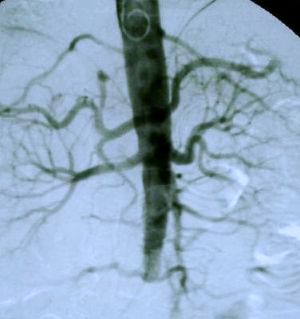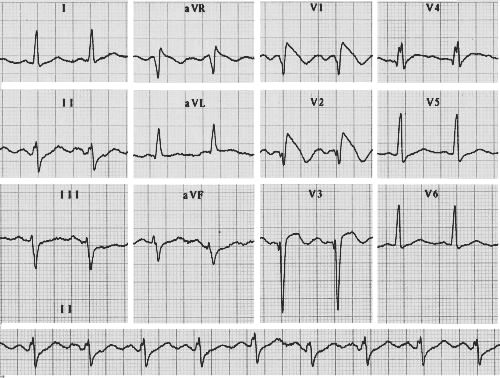
Fig 1. The patient's chest x-ray

Fig 2. Abdominal aortic angiogram
|
|
|
With their usual enthusiasm, the vascular surgeons obtained a gated radionuclide cardiac ejection fraction (MUGA scan) which returned a value of 25% (Normal value: > 50%). They also obtained an angiogram of the abdominal aorta, shown in figure 2.
QUESTION 1. In view of the chest x-ray, does the MUGA ejection fraction surprise you?
The patient's electrocardiogram (ECG) is shown in Figure 3. A senior cardiologist saw the ECG and said that a right bundle branch block was present, but was otherwise unconcerned.

Fig 3. ECG taken on 14 January 2000
QUESTION 2. Do you agree with the cardiologist?
The vascular surgeons decided to insert an aorto-bifemoral graft. The patient's left foot is shown in Figures 4 and 5.
|
|
|
|
Figs 4,5. The patient's left foot. | |
QUESTION 3. Do you agree with the vascular surgeons' proposed management?
| Date of First Publication: 1999 | Date of Last Update: 2006/10/24 | Web page author: Click here |